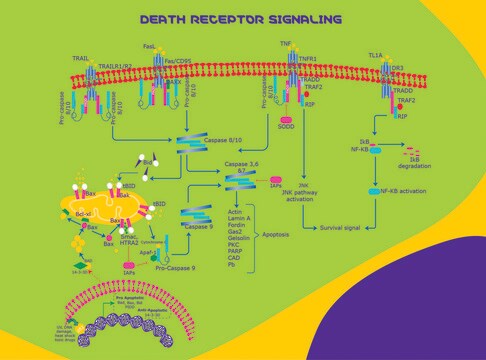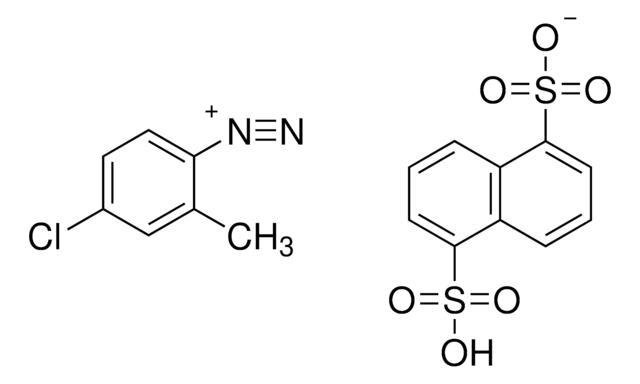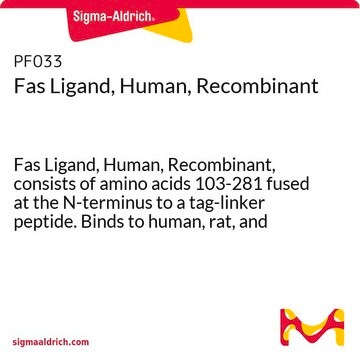GF092
TRAIL Protein, Recombinant human
Human TRAIL (TNF-Related Apoptosis Inducing Ligand), also called APO2 Ligand, is a cytotoxic protein which activates rapid apoptosis in tumor cells, but not in normal cells.
Synonyme(s) :
Apo2 Ligand
About This Item
Produits recommandés
Source biologique
human
Niveau de qualité
Produit recombinant
expressed in E. coli
Pureté
>98% (SDS-PAGE and HPLC)
Forme
solid
Poids mol.
19.6 kDa
Fabricant/nom de marque
Chemicon®
Technique(s)
cell culture | mammalian: suitable
Impuretés
<0.1 ng/μg Endotoxin (of TRAIL/Apo2L; 1EU/μg)
Entrée
sample type hematopoietic stem cell(s)
Adéquation
suitable for molecular biology
Numéro d'accès NCBI
Numéro d'accès UniProt
Conditions d'expédition
dry ice
Informations sur le gène
human ... TNFSF10(8743)
Description générale
Application
Actions biochimiques/physiologiques
Forme physique
Stockage et stabilité
Informations légales
Clause de non-responsabilité
Code de la classe de stockage
11 - Combustible Solids
Classe de danger pour l'eau (WGK)
WGK 3
Certificats d'analyse (COA)
Recherchez un Certificats d'analyse (COA) en saisissant le numéro de lot du produit. Les numéros de lot figurent sur l'étiquette du produit après les mots "Lot" ou "Batch".
Déjà en possession de ce produit ?
Retrouvez la documentation relative aux produits que vous avez récemment achetés dans la Bibliothèque de documents.
Notre équipe de scientifiques dispose d'une expérience dans tous les secteurs de la recherche, notamment en sciences de la vie, science des matériaux, synthèse chimique, chromatographie, analyse et dans de nombreux autres domaines..
Contacter notre Service technique







